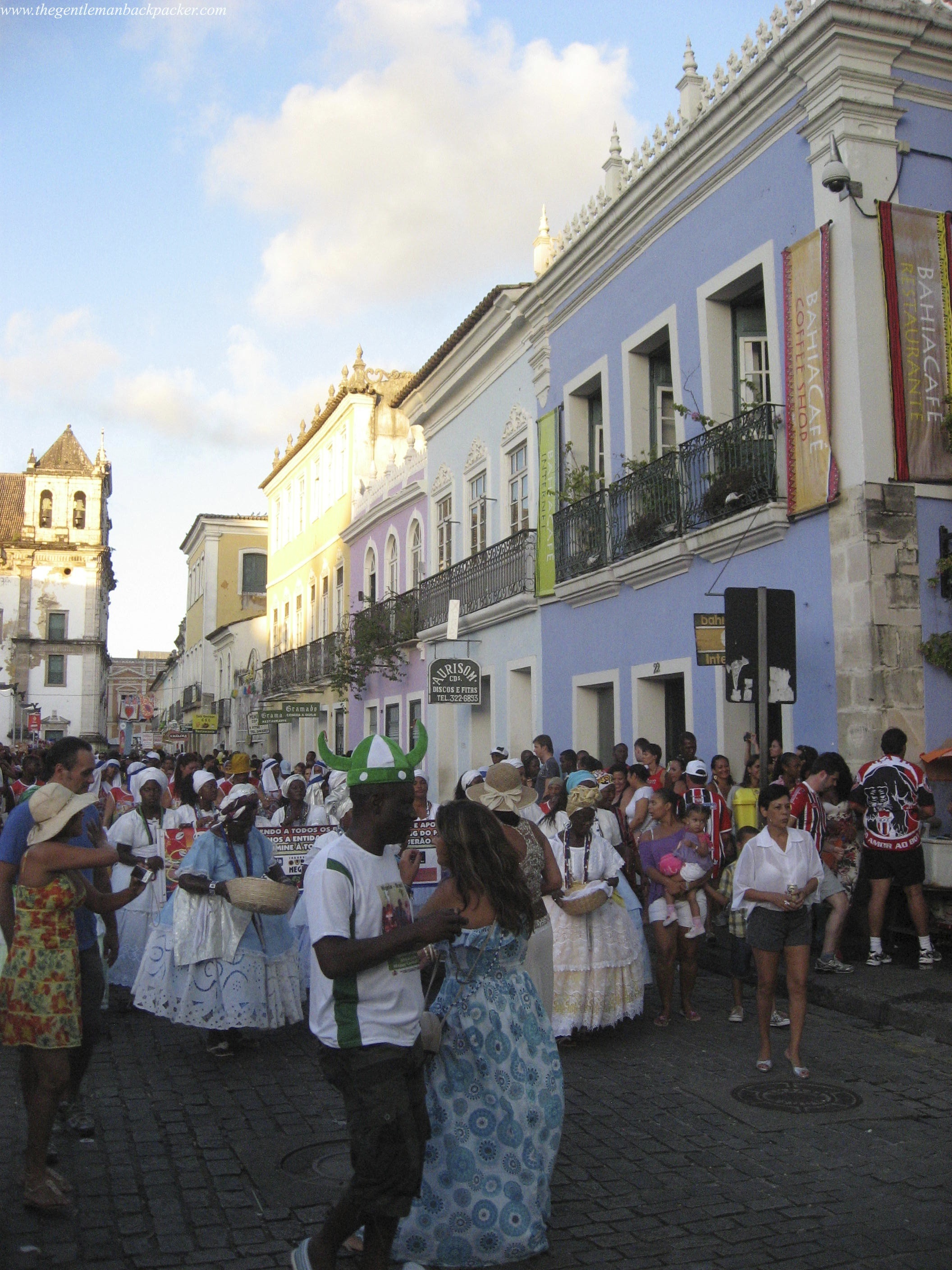
When you hear the words, “Carnival in Brazil,” what images come to mind? Many of you would likely conjure mental pictures of giant floats and voluptuous women in flamboyant, glittering, butterfly costumes parading past enormous grandstands in the streets of Rio–and you wouldn’t be wrong. In fact, the festivities were likely broadcast on your TV just last week. But there is another side to “Carnaval.” The “real” side, where Brazilians dream of going.; and it is an ordeal to survive, and a wonder in which to partake.
My story begins on Valentine’s Day a couple of years ago, right here in New York City. One of my best friends came to visit from across the Pacific, and we went out for a party at a well-known club here in the City. It was a so-called “French Tuesday” to boot, thus one of the big clubbing nights of the month. We met up with some other friends, nabbed a table, and stayed out until near closing time. I got home not in the best of shape, but having trained myself over the years to function in this less-than-ideal state, I packed my bags for the trip, showered, and went to work. Bets were placed in the office on whether or not I would come back alive.
Right after work, I met up with my visiting friend, and we took a car out to JFK to catch our flight to Miami. We landed there, and at the bar, ran into the third member of our crew, another friend who had flown to meet with us from half way around the world. As the anticipation mounted, we drank Bloody Marys at the bar while awaiting our redeye to Salvador, capital of the State of Bahia, Brazil.
Carnival is one trip you do not want to do alone for a multitude of reasons, but first and foremost of these is safety. In the weeks leading up to this particular Carnival, the city police in Salvador went on strike for better wages (this is a very common occurrence in Brazil–to strike at the point of maximum leverage–as evinced by recent protests over construction of the World Cup stadiums). Some thirty or so murders had occurred in the city in the weeks leading up to Carnival during this strike. This was far, far above the normal rate, even in a country often maligned in the press for its violent crime. As it happened, some 2000 national police were sent in to ensure safety during the week-long festivities, and the local police strike was resolved the day before the start of the events, meaning it was arguably the most well-guarded Carnival in some time. Just one knifing murder occurred during the time that we were there. Nonetheless, I cannot, under any circumstances, recommend going it alone on this one, especially if you want to really participate, which means drinking– lots of drinking.
Another good reason to go with friends is to defray some of the costs. Carnival is insanely expensive. According to a real estate manager with whom we spoke, who specializes in high end apartment rentals, some 80% of annual tourism revenue in Salvador comes during the month around Carnival. The number sounds high, but I have no way to verify it independently. Still, prices are exorbitant during that time. My friends and I rented out a 3 bedroom penthouse apartment with a kitchen, 3 bathrooms, a balcony, amazing views, and a pool (which turned out to be closed for repairs–during Carnival/summer/the hottest part of the year of all times!) for the 6 night minimum required, for something close to $4000 US. If that sounds crazy, well, that is the sort of going rate for that time of year. The earlier you can book, the better. By early, I mean August of the year before. Six months out, get on the case. By December all the nice places are long gone. Try to book a hotel room instead and it will cost more, on a per person basis, for some pretty mediocre dwellings. The best way to go is to bring 3 friends and rent a 4 bedroom place. It is tough to find apartments with more than 3 or 4 bedrooms in town. There are houses with more bedrooms listed on many of the apartment rental sites, but they are a good hour out of town on a normal day, and with Carnival in full swing, that travel time can easily triple. Stay in town. Also, groups that are too big are going to be difficult to control, especially once out in the crowds, so keep your group reasonable. Fifteen guys isn’t really going to be a manageable group out there.
The first thing we did when we got settled in, was head to the mall, and this is what you should do, too. Now why on Earth would you fly all the way down to Salvador to go the mall? That is where you go, with your passports, to get your “abadas.” At this time, it makes sense for me to explain a little bit about how Carnival works in Salvador.
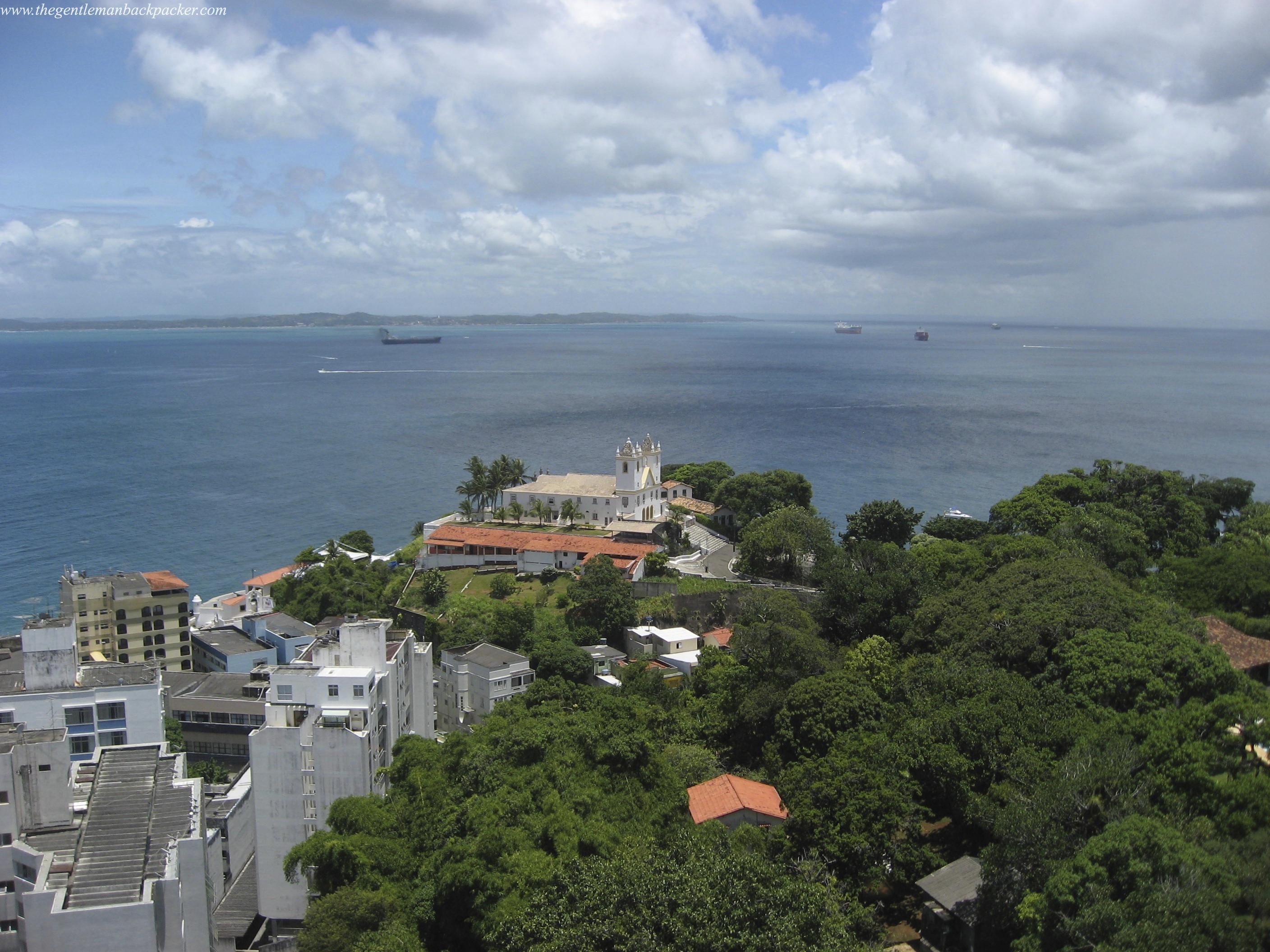
Blocos, Abadas and Camarotes
There are three circuit routes in Salvador. 1) Barra/Ondina (pronounced like the Spanish “baja”), 2) Campo Grande/Centro, 3) Pelourinho. The most famous is arguably the first, the third is definitely worth a visit. You should pick your apartment/location based on which circuit you will be frequenting. If you are reading this, you will probably be looking for something along the Barra/Ondina circuit. This parade starts in Barra, near the “farol” (lighthouse) and ends in Ondina, with a grandstand like you might see at a car race. Each day along the parade route, several floats called “blocos,” depart every hour from around noon until well after midnight. At the heart of each bloco is a large truck decked with a stage, giant speakers, and various lights. There are also usually smaller support trucks with bathrooms following behind. Each bloco has a musician assigned to it, and is sponsored by different companies on different days. This means that artist A will be on bloco 1 on thursday, but be on bloco 3 on friday, so you need to stay on top of your schedule while you are there. Around the blocos is a giant rope forming a large rectangle, perhaps 200 or 300 yards long, by 30 yards wide. These are held by rope holders hired for the week, who sport numbered bibs and thick gloves. Everyone inside the rope is the privileged— affluent enough to sport a special T-shirt; everyone outside the rope is known as “pipoca”– popcorn in English, aptly named because of the way they jump, run and tumble along the outside of the ropes, following the artists and the well-heeled beautiful people that have flown in from all over the country. The special T-shirt is the “abada,” and it is your ticket to the show, and to the hallowed ground inside of the ropes. There are no fancy dresses here, or half-naked women. Everyone who has the money to afford an abada is dressed roughly the same: shorts, running shoes, and your special T-shirt. Of course, girls being girls, they often customize and doll up their abadas into bare-midriff tanks and such, but you get the idea.
The artists play and sing, and the crowds cheer and dance, and along the parade route you go, moving from the busy area near the lighthouse to a beautiful road along the beach, around a bend to the right, and finally on to the homestretch, culminating in a parade past the grandstands. The parade route is maybe 5 miles long at most, but can take anywhere from 3-5 hours to complete, as the blocos frequently stop to perform in front of big hotels that promised a good show to their guests in exchange for their exorbitant tariffs.
Drinks are obtained from vendors among the pipoca outside the ropes who are running alongside the floats carrying coolers full of mini cans of beer (Brahma or Skoll, typically), and oddly, Smirnoff ICE. Water is available also. Each mini can of beer is a couple of reais (about a dollar), Smirnoff ICE typically costs double for a larger can, and water similar to beer. Break larger denominations every chance you get outside of the parade– at every store and restaurant plunk down a larger note, no matter the protests from the clerk (they love to protest)–and carry lots of small notes, because with the way the parade moves at times, you aren’t going to be standing around waiting to get change.
Toilets are a problem. Each bloco is surrounded by perhaps a thousand people within the ropes. The toilet trucks typically have one or two toilets for each of men and women. The lines are long; the sun is hot; you will be drinking a lot of water/beer/smirnoff ice; nature WILL call. With any luck you will be passing a restaurant or hotel–somewhere with a toilet. Do not venture out there alone (more on that later). Find a friendly, but strong-looking rope holder and negotiate with him for a few reais (at least 5, perhaps 10) to quickly to take you to the “sanitarios.” Grab on to him and let him be your bodyguard as he wades through the pipoca and takes you to the restaurant or hotel, where they will usually let you use the toilet, typically if you buy a drink to go or pay a fee, or just get lucky. When you are done, the bodyguard will know where his spot was on the rope better than you would, and lead you back there, where you can rejoin your friends. Go it alone and you are asking for trouble. If there are no toilets around, typically, men just go pee on the nearest wall or hill. Women, I’ve seen make do by gathering a group of their friends in a circle like an elephant herd protecting their young, and “going” in the middle of the circle. Needless to say, that urine-like smell coming off the ocean at times, is, in fact urine; do not go swimming in the beaches in the city of Salvador during this time. Carnival is not for the faint of heart.
At the end of the parade route, along the grandstands, are the after party venues known as “camarotes.” This is where you go, if you can afford it, to party on after your turn in the parade is done. Camarotes are generally all-inclusive affairs. You get in, and it’s all-you-can-eat/all-you-can-drink. There are bands and DJs inside, and stands from which you can see the other blocos coming through the finish line. Entrance requires a separate abada, so typically the safest way to not lose your shirt is to double-layer your abadas with the camarote one underneath and then the bloco one on top, then remove the bloco one when you are done. It will be hot, but that’s the best way. Carrying it in a bag is the worst way. If you want a souvenir when you are done, keep it. If not, your rope-holder-turned-bodyguard or any member of the pipoca will be more than happy to take it off your hands. There is huge demand for the abadas, and for many in Salvador, it’s the closest they can get to experiencing the privileged life inside the ropes.
So this brings us back to the shopping mall. Going to Carnival, as you might have gathered, requires a lot of advanced planning. One of the things that must be done ahead of time is to choose which blocos and camarotes you will attend on which days. Keep in mind, the festivities build in intensity and the prices rise as you get closer to the Tuesday before Ash Wednesday. Everything culminates with Tuesday, and so Monday and Tuesday are the two biggest days, with Sunday right behind. An in-demand bloco on one of those days, in prime-time later in the day, with a top sponsor and prominent artist, could cost 400~650 reais (almost $300 per person). The very best Carnival artists who perform in Salvador typically command hundreds of thousands of dollars per appearance. Some of the top artists include, but are not limited to: Claudia Leitte (who is something of a gay icon), Chiclete com Banana, and Ivete Sangalo, known locally just by her first name, Ivete (ee-veh-chee) and considered the Queen of Bahia. Most Brazilians swear to me that Chiclete com Banana is usually the best, but when I went to see them on the Monday, paying 600 reais, they were a disappointment. Some of the friendly locals apologized to us for the “unusual bad performance,” (they and no energy and took long breaks of silence or just talking between songs), and couldn’t hide their disappointment. Ivete, on the other hand, was an outstanding performer, with the energy of a person half her age, the talent to back it up, and incredible charisma. By the end of the trip, we were all enamored with her. In my opinion, if you can only afford to splurge on one bloco, hers is the one to spend it on. There are, of course, other blocos you can choose for cheaper, especially early in the week with lesser-known artists, or early in the day. These you can typically pick out after you arrive at the Carnival pop-up stores in the malls, in consultation with the staff. Keep in mind that not much English is spoken in Salvador, so you might find yourself gesticulating a lot. The most popular abadas sell out in advance or go up in price for last minute purchases, so you need to plan ahead.
The most popular camarotes are, if you can believe it, even more expensive than the most expensive blocos. “Camarote Salvador” is the best, most famous, most glamorous, best-organized, includes the most perks, and is the most expensive. Monday night abadas can set you back some 1300 reais ($550) but seem to be going up every year. Typical headline acts from the recent past include David Guetta, Pitbull, Calvin Harris, etc. In addition to top international DJs, there is a makeup/abada customization booth for girls (be warned, there are huge lines for this), color-coordinated flip-flops/sandals given out by the beach bar to match your shirt for the night (i.e., if Thursday night is turquoise abada night, your sandals that night will be turquoise. If you go back on Saturday and it is red night, you will receive a red pair), a well-stocked and tasty buffet, a great grandstand with views of the “finish line” of the parade, and of course, open bar. Here they serve Ballantine’s and Absolut, but won’t have any luck finding Grey Goose or Glenfiddich. I can’t speak for the women at the venue (the girls we were with said the men weren’t that great), but for the guys reading this, well, it doesn’t get much better in this world as far as eye candy goes, than standing in front of the main staircase to the grandstand in Camarote Salvador, watching the gorgeous women walk by.
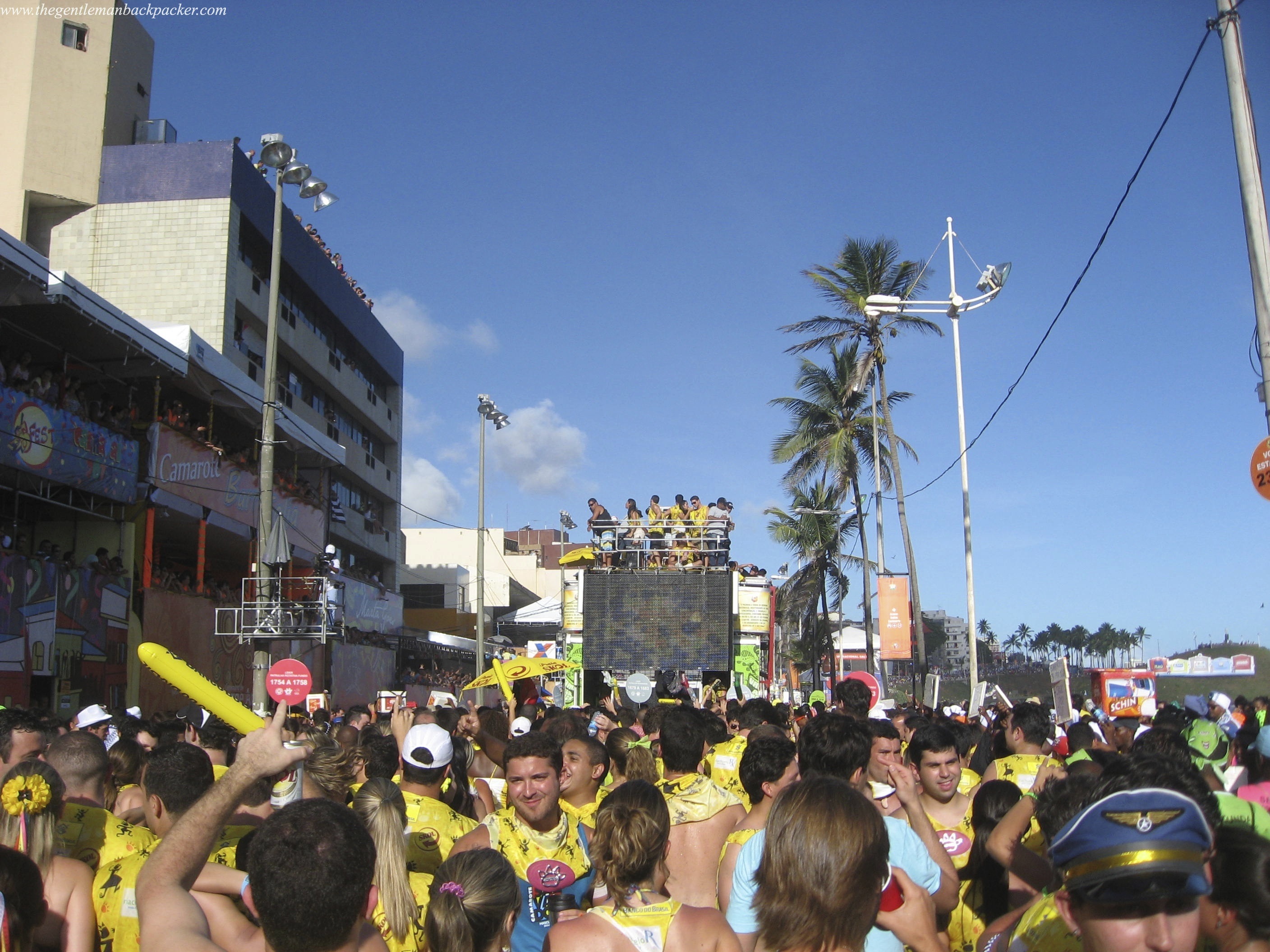
My story
We arrived on Thursday after flying the Wednesday night redeye from Miami. The trip to the Shopping Iguatemi mall took several hours due to a combination of traffic and waiting in lines to get our abadas. We also had a rather fun time trying to buy pay-as-you-go cell phones in the mall. Due to local identity laws, etc., we had to “sign up” for mobile plans for just a week, present IDs, etc. No one in the store spoke a lick of English, and we had some Spanish and almost no Portuguese. We were pretty exhausted. We met up with some friends from Sao Paulo and an ex-colleague from Tokyo who was on a round-the-world trip with her boyfriend at the time for some ice-cold “chop” (draught beer) before we left them to get ready to tackle our first ever Carnival experience with the bloco “Harem,” which was supposed to have a decent gender ratio.
I gave you the lengthy intro above, but we really had no idea what to expect when we rolled up just before 9pm. There weren’t many tourists yet in town so early in the week and we had no idea which group was our bloco as we waded through the pipoca, looking to find our sisters and brothers in the same shirts we had. There were perhaps a half dozen blocos lined up by the farol, stretched out for a couple of miles, with a sea of people in between. We showed up about 20 minutes before start time. As it turned out, that wasn’t enough time to find where we needed to be while wading through the crowd. We hadn’t yet made it to our bloco when the music started up and the entire street turned into the most tumultuous and biggest mosh pit I’ve ever seen. We were outside the ropes, in the pipoca, and we, as wide-eyed foreigners, were targets. I got immediately jostled by four rope holders, working with the pipoca, and I felt hands ripping at the velcro flaps on my board shorts pockets, trying to take whatever they might find inside. I only had a couple of small notes in there. I had at least planned ahead and put any larger denominations inside my socks. I did have my camera with me, though, and that was not the best plan, but I took my oldest and worst camera, with a fresh memory card, prepared for the worst. One of our trio, well over 6 feet tall, fit, and built like a tank, seemed to become a target simply for people looking to take down the biggest foreigner there, rather than for attempted theft. A few minutes later, we pulled off the main road to a side street to catch our breath and regroup… “Holy sh*t! This is insane!” We looked up and right then, saw the Harem float moving by. We made a run for it, got inside the ropes, and breathed a sigh of relief. The drama was done.
It took us a few more minutes before we felt comfortable enough to start taking in the surrounding and get involved. We grabbed a couple of Skolls from a vendor, chugged them, felt better, and started with some head-bobbing as we watched everyone else go crazy with the music. People inside the ropes tended to be very friendly for the most part the whole week; most of them were from the big cities like Sao Paulo or Rio and many spoke good English–not that people outside the ropes weren’t. That would be a horrible judgment about Salvadorans vs. other Brazilians. No, Salvadorans were friendly for sure. But you were just less likely to be a target for pickpockets inside the ropes than out. That’s just a matter of fact. And English was also spoken more inside the ropes with the people from the big cities. It’s our fault… “desculpa, no fala portugues!”
We arrived at the finish line a little after midnight, and on this night, at the terminus the crowd just dissipated. We didn’t really know what to do or where to go, so we found a hut to get some street meat and some more Skolls. Somehow, in the process, we lost one of our trio-the big guy, and the remaining two were worried sick about where he might have gone. Freshly bought cheap Chinese mobile phones? Ringing off the hook with no answer. Finally, we figured the best course of action was to return home. Of course, trying to figure out how to walk back without going against the flow of the parade traffic up the main route was a bit intimidating. We ended up hitching rides on the back of motorcycles (moto-taxis are not legal there and I am not endorsing them in any way)– a harrowing experience at first when going through throngs of people, especially being disorientated on the back of a motorcycle, drunk, and in a new city. Once we got to open road, it was actually very pleasant. We got home, but still no sign of our friend. A couple more hours of concerned waiting and he turned up, having befriended some guys who ran a Brazilian jujitsu studio who were evidently impressed with him. And so our time at Brazil’s “real” Carnival began with a few bumps along the road.
By the end of the week, three grown men were practically crying on board their flight back to Miami, distraught to be leaving.
If I summarize, in one phrase, what it is about Brazil that I love so much, it’s “the people.” I’ve been to the marvelous city Rio of course, and Sao Paulo, and Manaus and the Amazon jungle in a kayak and a hammock, and Maranhao State, with Sao Luis and the magical sand dunes of Lencois Maranhenses, and most recently, the heaven-on-Earth that is the island of Floripa. Everywhere I go in Brazil, I am greeted by the warmest, happiest people on the planet. Every time I go, I never want to leave. Salvador was no exception.
The week went on, and on, and on. It seemed to never end. Get up at noon, hit the gym for an hour, eat some food. Have a shot of chilled vodka to get ourselves fired up, maybe drink an energy drink, head down to the lighthouse to find our bloco, join the parade and start drinking and dancing, hire a toilet bodyguard to take us out through the pipoca, come back, keep drinking, dance some more, talk to people, drink some more, dance some more again. Get to the end, go to the Camarote Salvador, drink and dance the rest of the night away. Leave at 6am at closing time, walk back through the five miles of thick sludge composed of mud and piss and booze on the parade route back to home, just as the big street-washing trucks were there to fill the street with soapy suds and wash all the grime away if only for a few hours. Sit on the balcony and unwind for a couple of hours. Try to sleep for two or three hours until it is time to go again, and again, and again. I was too tired to even sleep. Music still in my ears. Red Bull and 5-hour energy not helping when trying to sleep at 10am in the bright sun, but definitely helping around 2am on the dance floor at the Camarote (By the way, I avoid these things 99% of the time, and certainly only drink them during exceptional circumstances). We were all tired. Patience among friends is required, as well as the understanding that we may get on each other’s nerves, but that we would be okay with each other afterwards and understand that (it’s not unlike a long weekend in Vegas that way).
If there was an anthem for that trip, it was Michel Telo’s version of “Ai se eu te pego,” immensely popular at that time, and trending on youtube like no song before it until “Gangnam Style” came along. When we met locals with whom we couldn’t communicate, all it took was a little “Noosa, noosa,” to break down the walls.
If there was a moment on that trip, it was on Sunday afternoon. The seven of us were part of the bloco featuring Ivete (including the friends we had met up with at the mall from Tokyo and Sao Paulo). We were on the part of the circuit that runs along the beach as the route transitions from Barra to the neighborhood of Ondina, sea on the right side. It was hot, maybe 35 or 36 celsius, (approaching 100F) and humid. Everyone in the crowd was exhausted, low in energy, and dragging their feet. The parade was proceeding at a glacial pace due to the sheer number of people turning out for the weekend. And then, to make things worse, it began to rain. A groan went up from the crowd. This was the last thing everyone needed–to get soaked on top of everything else. But moments later the sun began to pierce through the clouds while the showers continued, creating one of those rainbows-and-glittering-raindrops magical moments of sunny showers, and the groans soon turned to cheers. The water cooled everyone off, and the energy began to surge again through the crowd. Ivete, seizing the moment, came out from under her tarp and began to play a great, signature Carnival tune, medium tempo, saucy, fun, and catchy, and spectators cheered from apartments along the street and the entire place felt like one. The seven of us looked at each other and shared a moment that was pure magic.
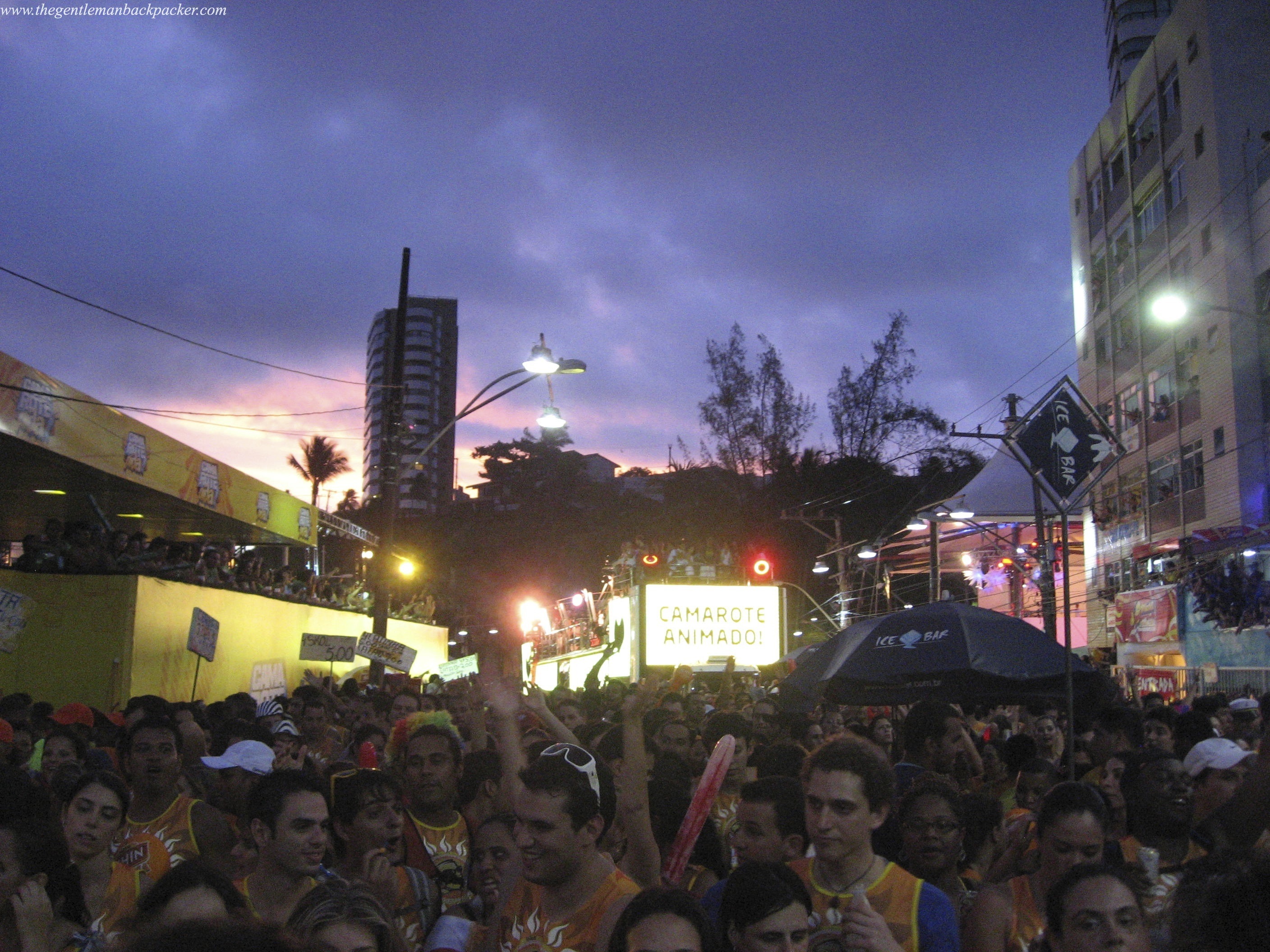
The day before we were to go home, the three of us finally took a day of rest, and we all felt pretty under the weather, worn out from our “both-end-candle-burning” over the past few days. We decided to go visit the Old Town historic center and check out the Pelourinho circuit. We lined up to take the giant elevator (if you have been to Lisbon, Portugal, you have seen similar), that separates the port area from the Old Town neighborhood. Up top, we found a beautiful, if small, colonial town, with churches, squares, and views of the sea. The Pelourinho circuit goes through this area, and this version of “carnaval” was worlds apart from the mayhem of the electronic, amped music of the blocos. Instead, it was steel drums and horns, and people in masks and beautiful, old, frilly dresses, marching around the town square. We picked a patio at a cafe, and sipped on some caipirinhas as we watched the sun go down and the parade go ’round. To our surprise, a trio of girls from Japan were there, having made the trip to Salvador for Carnival on their own–proof that it can be done by anyone. We vowed that next time, we would spend a couple of days in this area, experiencing this side of Carnival more fully. We capped our night by joining our other friends back in Barra for a beautiful seaside dinner of moqueca (seafood stew with rice) and bobo with shrimp (yellow cassava stew–bit like creamy potatoes, but less starchy). As we toasted the completion of a wonderful trip over our delicious feast, we could hear the bass beats in the distance, and the sea breeze smelled of urine. Still, you couldn’t wipe the smiles off our faces, or the tears from our eyes the next morning as we boarded our planes to begin the long journey home.
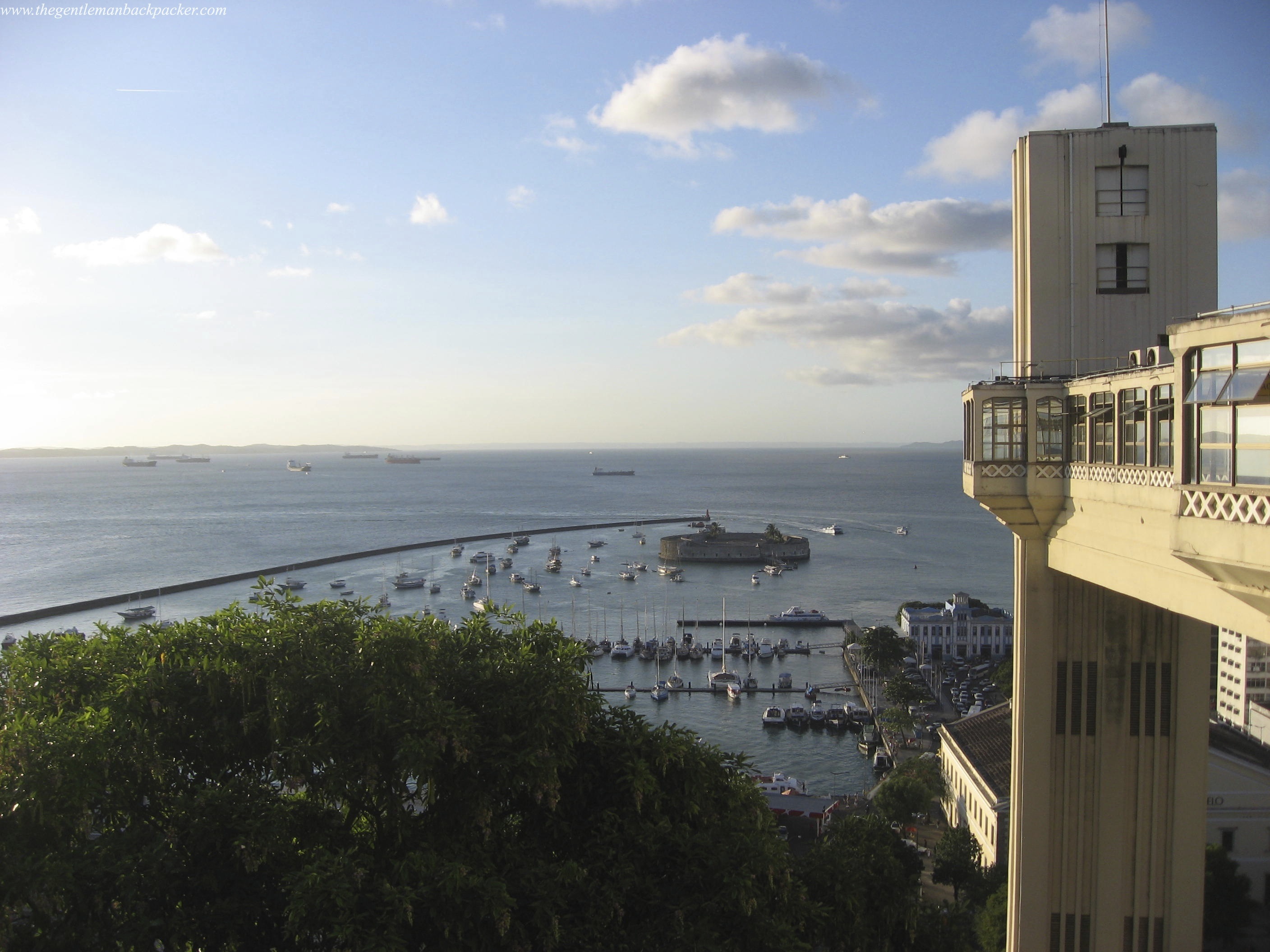
Practicalities
How to get there:
Brazil is an enormous country. Salvador is north of the major cities of Brasilia, Sao Paulo, and Rio. As such, the shortest route from North America is to fly from Miami to Salvador direct (American Airlines flies there, with the return trip making a brief stop in Recife).
Where to stay:
-There are many hotels and hostels. Beware they fill up fast and are expensive during this time. I don’t have any recommendations to offer. I personally think your best bang for the buck is with sharing an apartment with friends, as mentioned above. In terms of location to consider, pick somewhere either near the start or the finish of the Barra/Ondina Circuit. Travel during this time is severely hampered by the parades, traffic and people. It takes double or triple the time to get anywhere you want to go. One thing to consider is whether you want to stay in Ondina and walk an hour to the starting line by the lighthouse, or stay in Barra and walk back in the morning from Ondina to your apartment/hotel. Barra has more nice apartment blocks that Ondina, and that’s what we did. But if you are able to find something nice in Ondina, that’s probably easier from a logistics point of view.
Abadas:
-Go to the mall when you arrive and get this all done ASAP. The last thing you want to do is go to the mall multiple times during your trip. Everyone in your party has to be present, with ID, to receive your shirts, so you can’t send a runner in this case. Make photocopies of your ID and carry that with you at all times. To our surprise, one of the baby-faces in our group got denied entry to Camarote Salvador because he looked too young. He had to walk back an hour to his hostel and an hour back to get his ID.
What to wear/bring:
-Running shoes you don’t mind parting with. Trust me, by the end of the trip you won’t want to keep them. I don’t recommend flip-flops/sandals for the parade. Gross!
-Shorts with zippers/hidden pockets–cargo shorts or board shorts with pockets–make it harder on the pick-pockets.
-Cheap sunglasses you don’t mind losing. If you haven’t lost them by the end of your trip, you haven’t done your trip right.
-Cash: as many small denomination reais notes as possible. The ATMs in Barra aren’t great. Many of them don’t seem to work well, at least during Carnival, with foreign cards. There is one red ATM box, at the bottom of the main hill in Barra, closest to the little square and the sea, that seems to work well.
-Energy drinks if that’s your thing. There is also a supermarket in Barra, complete with most things, and a DJ in the parking lot (because of course that’s normal), but energy drinks cost significantly more in Brazil than elsewhere. Beer, however, is cheap.
-DO NOT, UNDER ANY CIRCUMSTANCES, FORGET TO OBTAIN YOUR VISA for Brazil. Get on the case at least a month ahead. Brits, you are in luck, no visa needed. Americans, Canadians, Japanese, etc., citizens of most countries must obtain a visa ahead of time. The process is a pain in the neck, at least it is here in NYC. Contact your nearest Brazilian Consulate branch for details. If you’re forgotten to do so somehow and there isn’t enough time, don’t despair. Route your flight with a two night stopover in Buenos Aires and you can get your visa within 48 hours (I will make a separate post about this at a later time). Email me with any questions on how to do that.
Who to see:
-Ivete Sangalo… and then the rest. Chiclete com Banana, Claudia Leitte probably round out the traditional top three.
-Camarote Salvador is the glitziest of them all as far as after-parties and features top international DJs.
What not to do:
Wipe your face with the head-gear of the Sons of Gandhi group. One of us mistook it for a towel, with near-disastrous consequences!
Comments, questions, feedback? Email me at [email protected]
Thanks for reading this post! If you liked it please think about subscribing by following this link Subscribe here. You will receive an email when new articles are posted. Your email address will be secure and you will never receive any marketing emails from third parties. Every new subscriber matters since this is a relatively young site. We really appreciate your support.

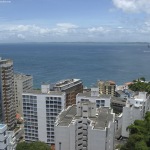
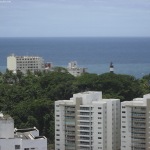
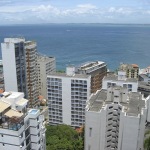

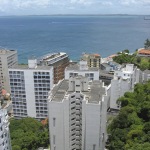
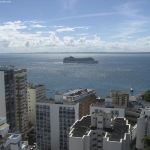
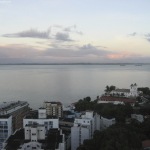
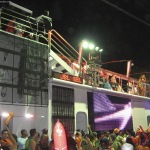

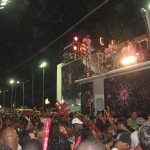
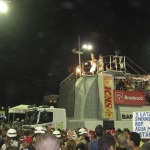
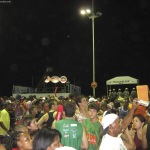
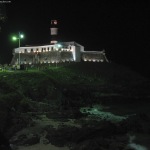
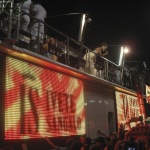

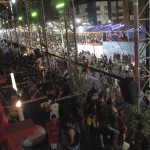
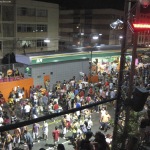
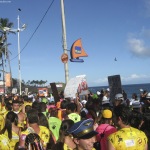
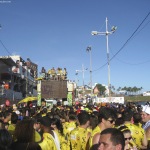
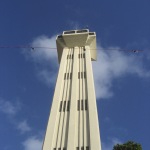
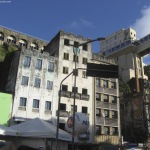
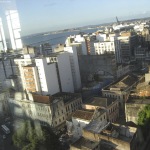


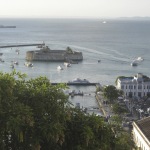
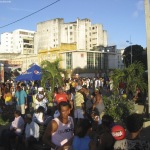
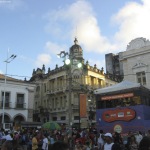
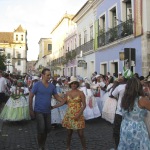
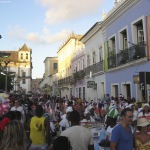
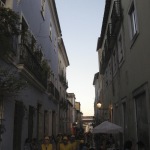
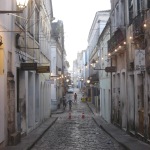
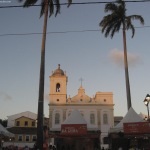
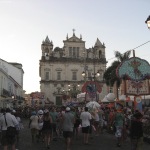
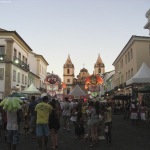
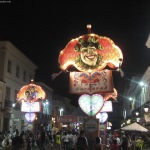
Hi! Just went through your post and it was very helpful! Me and my husband are going to Salvador for the carnival for our honeymoon in February 2016 and we just have 1 question for you – where did you buy your tickets for camarote Salvador? We definitely want to spend 2 days at this camarote, but we aren’t able to buy any tickets online. Can you help us out please?
Thanks 🙂
Payal
Hi Payal,
How are you? Thanks for reading and thanks for the question. You can buy your tickets online at this link: http://www.camarotesalvador.com.br/ingressos/
Pretty much like with everything else, you will need to go pick up your abadas (shirts) beforehand at the designated pop-up booth in the shopping mall.
Hope that helps and congratulations on your wedding and honeymoon!